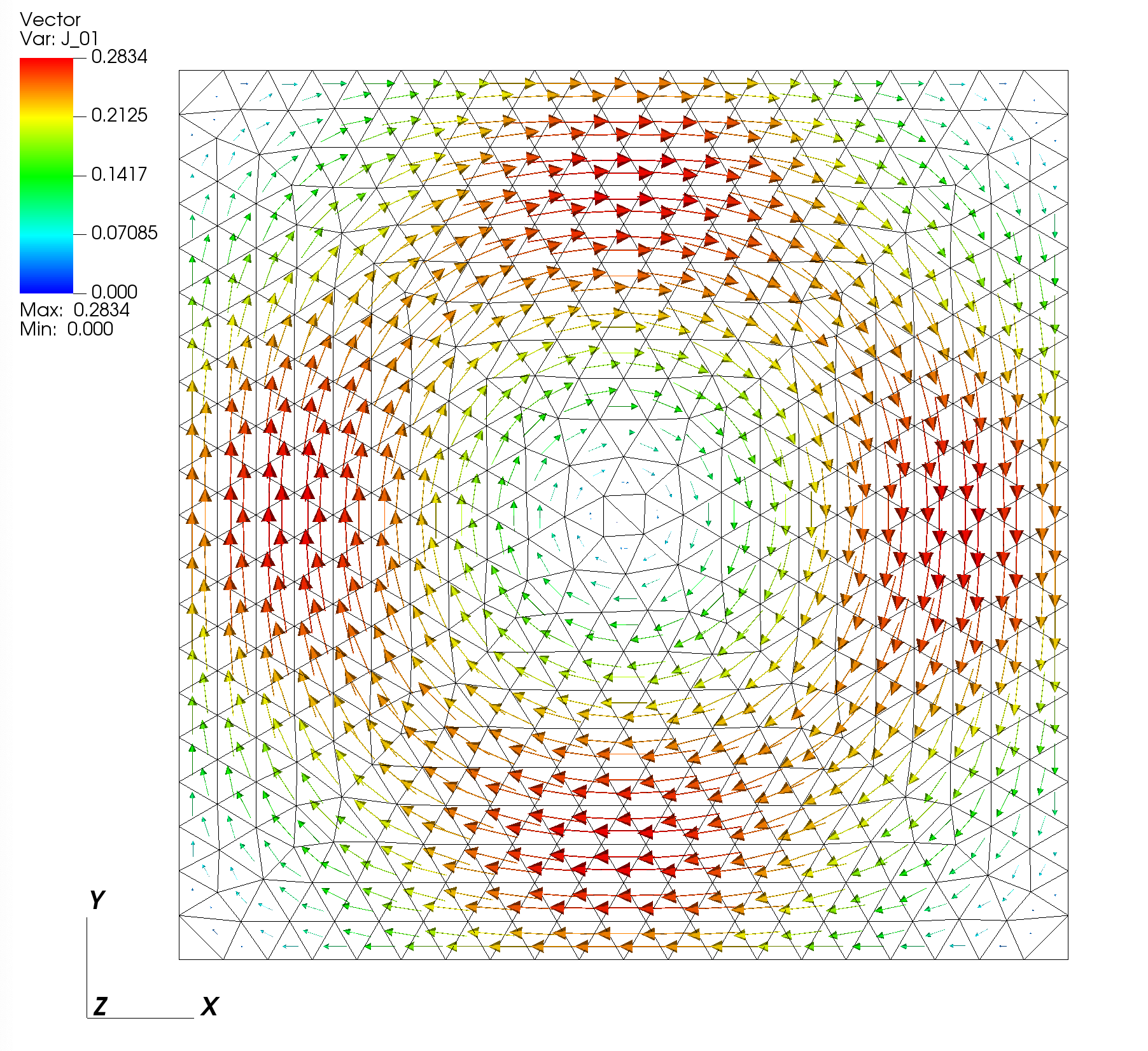Table of Contents
Running an eigenvalue calculation
To run an eigenstate simulation (compute the characteristic L/R-decaying modes) you can issue the following command from within one of the run directories. Note, make sure plot_run=F in the thincurr_eig_options group.
/path/to/oft/bin/thincurr_eig oft.in oft_in.xml
Contents of the input files are provided below and in the examples directory under ThinCurr/plate, along with the necessary mesh file thincurr_ex-plate.h5.
During the run you will see it report a bunch of general information and then it will report the first few eigenvalues from the calculation. These values should all be purely real (no imaginary component) and should be decreasing in value from first to last. For this case the largest values should be around 9.7 ms.
Post processing
Once complete you can now generate XDMF files suitable for visualization of results using the VisIt code. This is a two step process. First, rerun the code as above but with plot_run=T in the thincurr_eig_options group. Once complete, you need to run the build_xdmf.py script, which generates XDMF metadata files that tells VisIt how to read the data. This can be done using the following command
python /path/to/oft/bin/build_xdmf.py
Next use VisIt to open the surf_static.xmf file, which will contain a series of vector fields named as J_XX that correspond to the current distributions of the various eigenstates. If you are running this example remotely and using VisIt locally you will need to copy the mesh.*.h5, scalar_dump.*.h5, vector_dump.*.h5, and *.xmf files to your local computer for visualization. The first eigenmode J_01 should look like the figure below.

Supporting information
Input files
General global settings (oft.in)
&runtime_options debug=0 / &mesh_options cad_type=0 / &native_mesh_options filename="thincurr_ex-plate.h5" / \verbatim &thincurr_eig_options direct=T plot_run=F neigs=4 /
XML global settings (oft_in.xml)
Mesh definition
Cubit mesh script (thincurr_ex-plate.jou)
The file can then be converted to OFT's native mesh format using the convert_cubit.py script as
python /path/to/OFT/bin/convert_cubit.py --in_file=thincurr_ex-plate.g
which will yield the converted file thincurr_ex-plate.h5.